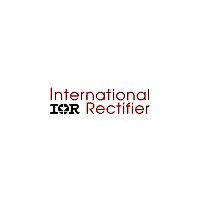IRU1030CM International Rectifier, IRU1030CM Datasheet - Page 4

IRU1030CM
Manufacturer Part Number
IRU1030CM
Description
IC REG ADJ LDO 3.0A TO-263-3
Manufacturer
International Rectifier
Datasheet
1.IRU1030CD.pdf
(11 pages)
Specifications of IRU1030CM
Regulator Topology
Positive Adjustable
Voltage - Output
2.5 ~ 3.3 V
Voltage - Input
Up to 7V
Voltage - Dropout (typical)
1.1V @ 3A
Number Of Regulators
1
Current - Output
3A
Current - Limit (min)
3.1A
Operating Temperature
0°C ~ 150°C
Mounting Type
Surface Mount
Package / Case
TO-263-3, D²Pak (3 leads + Tab), TO-263AA
Lead Free Status / RoHS Status
Contains lead / RoHS non-compliant
Other names
*IRU1030CM
IRU1030-CM
IRU1030-CM
IRU1030-CM
IRU1030-CM
Available stocks
Company
Part Number
Manufacturer
Quantity
Price
Company:
Part Number:
IRU1030CM
Manufacturer:
IR
Quantity:
1 584
Part Number:
IRU1030CM
Manufacturer:
IR
Quantity:
20 000
IRU1030
Output Voltage Setting
The IRU1030 can be programmed to any voltages in the
range of 1.25V to 5.5V with the addition of R1 and R2
external resistors according to the following formula:
The IRU1030 keeps a constant 1.25V between the out-
put pin and the adjust pin. By placing a resistor R1 across
these two pins a constant current flows through R1, add-
ing to the I
a voltage equal to the (1.25/R1)3R2 + I
will be added to the 1.25V to set the output voltage.
This is summarized in the above equation. Since the
minimum load current requirement of the IRU1030 is
10mA, R1 is typically selected to be 121V resistor so
that it automatically satisfies the minimum current re-
quirement. Notice that since I
of 50mA it only adds a small error to the output voltage
and should only be considered when a very precise out-
put voltage setting is required. For example, in a typical
3.3V application where R1=121V and R2=200V the er-
ror due to I
Load Regulation
Since the IRU1030 is only a three-terminal device, it is
not possible to provide true remote sensing of the output
voltage at the load. Figure 4 shows that the best load
regulation is achieved when the bottom side of R2 is
connected to the load and the top side of R1 resistor is
connected directly to the case or the V
regulator and not to the load. In fact, if R1 is connected
4
V
IN
V
Where:
V
I
R1 and R2 as shown in Figure 3:
ADJ
Figure 3 - Typical application of the IRU1030
OUT
REF
= 50mA Typically
= 1.25V Typically
= V
for programming the output voltage.
ADJ
ADJ
REF
current and into the R2 resistor producing
is only 0.3% of the nominal set point.
3 1+
V
IN
( )
IRU1030
R2
R1
Adj
+I
I
ADJ
ADJ
V
ADJ
OUT
= 50uA
is typically in the range
3R2
V
REF
ADJ
R1
R2
OUT
3R2 which
pin of the
V
OUT
www.irf.com
to the load side, the effective resistance between the
regulator and the load is gained up by the factor of (1+R2/
R1), or the effective resistance will be R
R1). It is important to note that for high current applica-
tions, this can represent a significant percentage of the
overall load regulation and one must keep the path from
the regulator to the load as short as possible to mini-
mize this effect.
Stability
The IRU1030 requires the use of an output capacitor as
part of the frequency compensation in order to make the
regulator stable. Typical designs for microprocessor ap-
plications use standard electrolytic capacitors with a
typical ESR in the range of 50 to 100mV and an output
capacitance of 500 to 1000mF. Fortunately as the ca-
pacitance increases, the ESR decreases resulting in a
fixed RC time constant. The IRU1030 takes advantage
of this phenomena in making the overall regulator loop
stable. For most applications a minimum of 100mF alu-
minum electrolytic capacitor such as Sanyo MVGX se-
ries, Panasonic FA series as well as the Nichicon PL
series insures both stability and good transient response.
Thermal Design
The IRU1030 incorporates an internal thermal shutdown
that protects the device when the junction temperature
exceeds the maximum allowable junction temperature.
Although this device can operate with junction tempera-
tures in the range of 1508C, it is recommended that the
selected heat sink be chosen such that during maxi-
mum continuous load operation the junction tempera-
ture is kept below this number. The example below
shows the steps in selecting the proper regulator heat
sink for the GTL+ terminator using a separate regulator
for each end.
V
IN
Figure 4 - Schematic showing connection
V
IN
IRU1030
for best load regulation.
Adj
V
O U T
PARASITIC LINE
RESISTANCE
R1
R2
R
P
P(eff)
=R
P
3(1+R2/
08/20/02
Rev. 1.3
R
L












